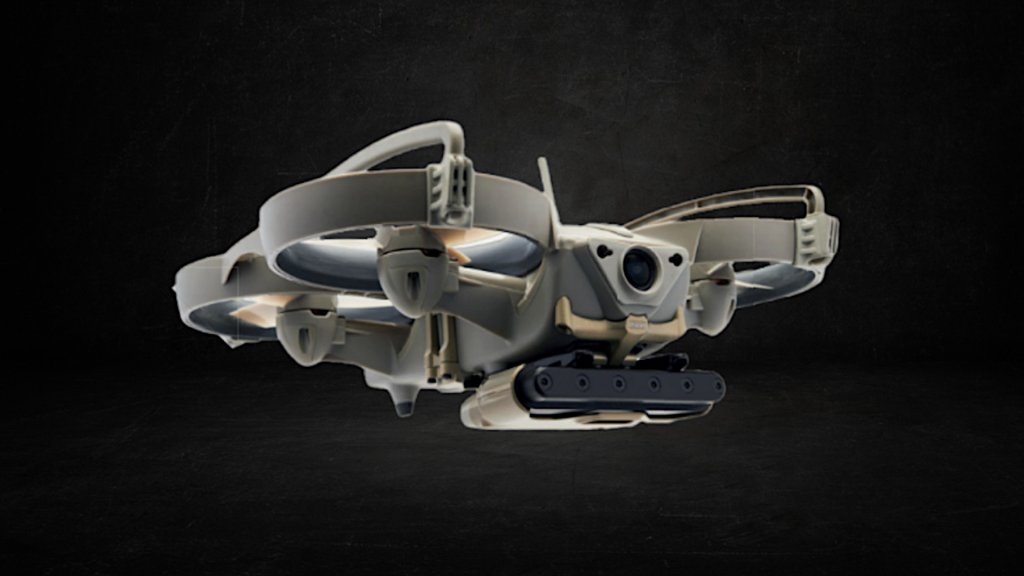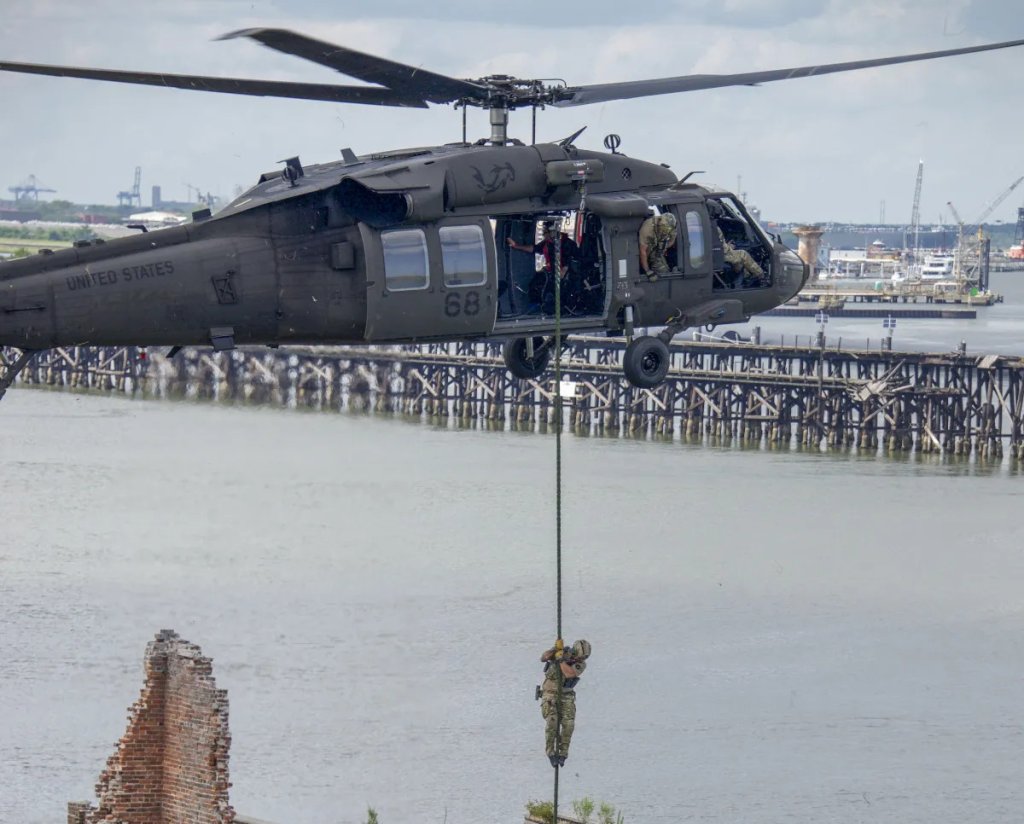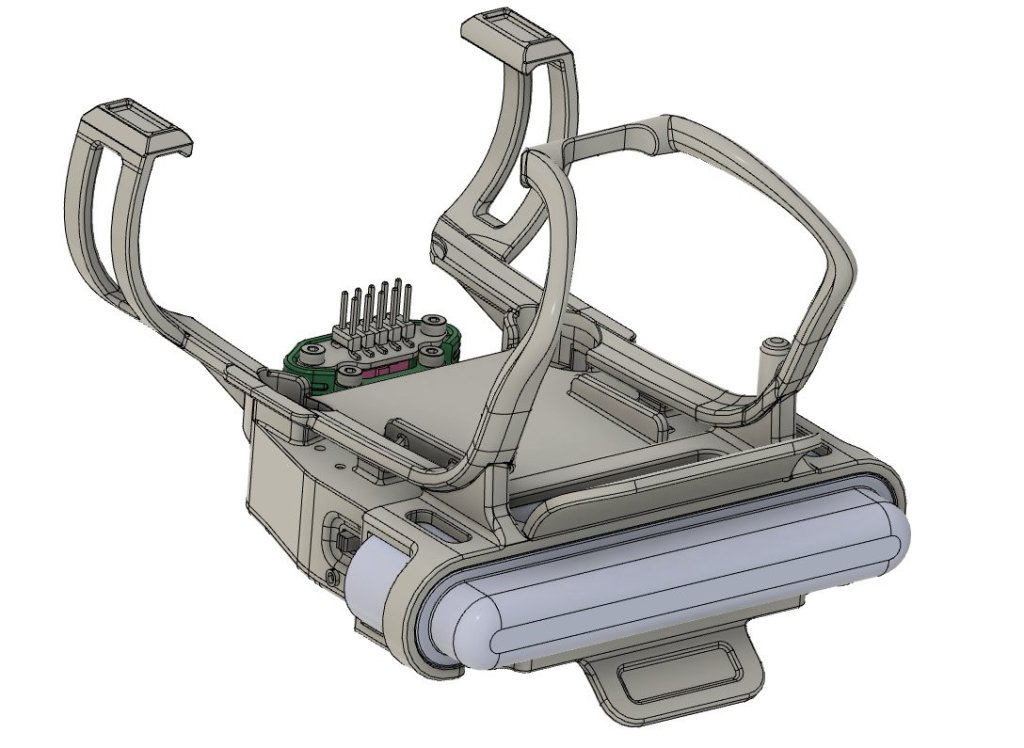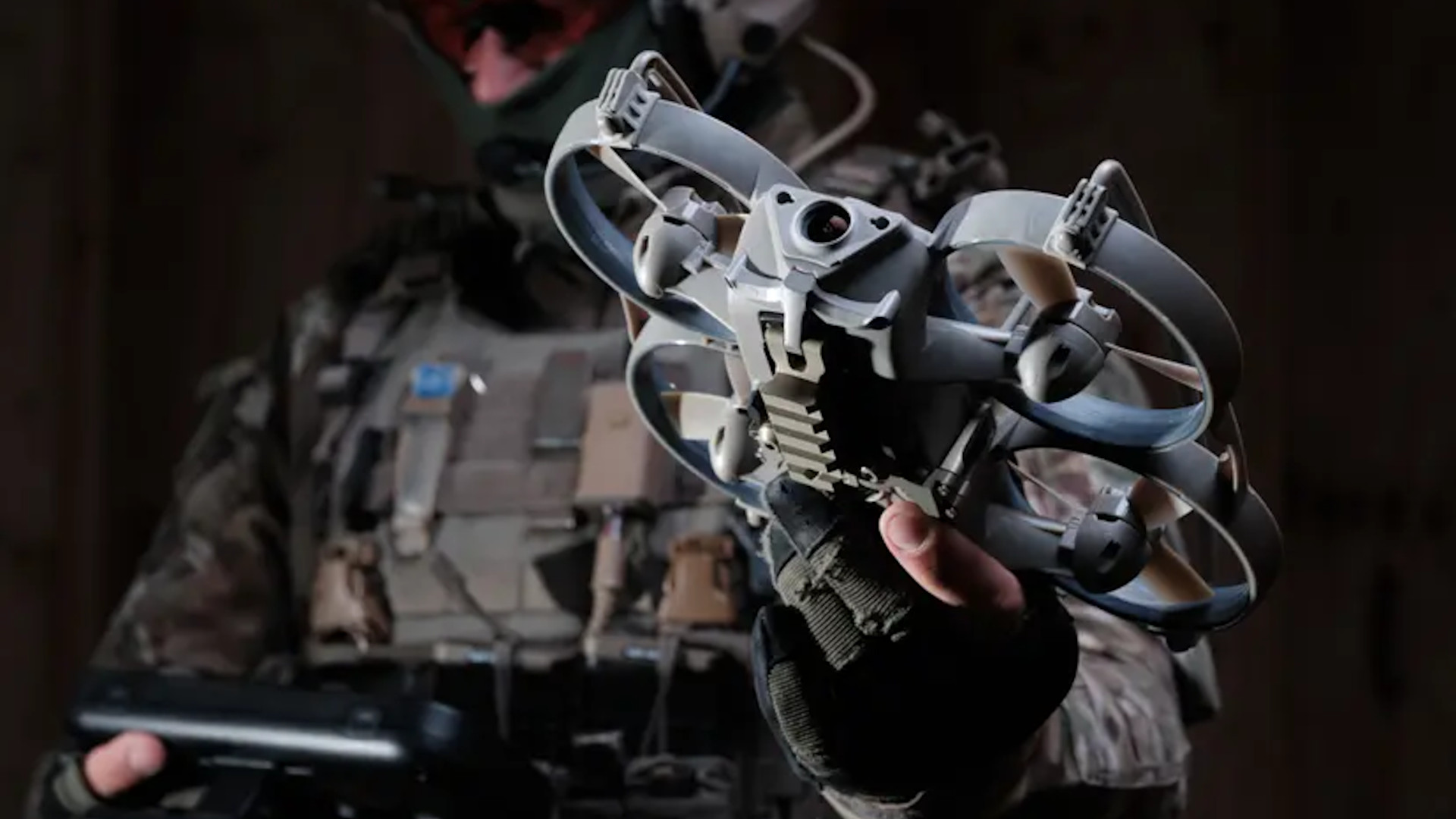The U.S. Federal Bureau of Investigation (FBI) is moving to buy less-than-lethal distraction devices to mount on small hand-launched drones. Uncrewed aerial systems equipped in this way would offer a valuable additional way to confuse and disorient hostage takers, terrorists, and other threatening individuals, especially ones barricaded inside buildings.
The FBI put out a notice announcing its intent to issue a sole-source contract to the U.K.-based Typhon Group Limited “for the purpose of procuring Sky Hero Loki accessories for attachments and accessories,” on August 7.

“Typhon products have been designed to fit the Sky Hero Loki Mk2 and were the only products to be available from Sky Hero for the Loki. This has caused the FBI to equip the UAS with Typhon payloads,” the notice adds. “Training and tactics were then developed in accordance with these capabilities. These payloads are only available directly from Typhon.”
The FBI announcement does not mention distraction devices specifically, but they are the only accessory for Loki drones that Typhon Group lists on its website. In 2021, Typhon Group also announced a partnership with Belgium-based Sky-Hero specifically about adding this capability to the Loki Mk 2 variant. Various kinds of distraction devices also represent the bulk of Typhon Group’s overall product offerings.
The notice also does not say who within the FBI will be getting the Typhon Group “payloads” for the Loki Mk 2 drones. The Bureau does have SWAT teams within all of its field offices, as well as at its headquarters in Washington, D.C., along with the elite Hostage Rescue Team (HRT) based in Quantico, Virginia. Despite its name, the HRT is a top-tier domestic U.S. law enforcement special operations unit that is capable of conducting a wide array of direct-action missions.

Typhon Group DS-100SH payload for use on the Loki Mk 2 weighs 163 grams, or just under four-tenths of a pound, when loaded with a live “distraction cartridge.” When initiated, the system can produce up to five individual loud bangs, each one being rated at around 170 decibels at one meter, according to the manufacturer. Sound dissipates the further away you get from the source. For comparison, a typical conversion between people speaking close together is around 50 decibels, while a jet engine on a commercial airliner can register 130 decibels or more during takeoff, even if you’re standing 100 feet away.

The DS-100SH has at least four available modes of operation, one of which involves an operator remotely initiating each of the bangs. The bangs can also be programmed to fire in a custom sequence or in a rapid-fire cadence “likened to automatic rifle fire,” according to the manufacturer. Lastly, there is what Typhon Group calls the “Shock and Awe” option where all five bangs occur simultaneously.
By using pre-loaded cartridges, the system can be readily reloaded after use. Typhon Group’s website says it is developing more types of cartridges for use in the DS-100SH that will be able to produce other kinds of effects.
There are already clear use cases for Loki Mk 2s carrying DS-100SHs loaded with five-bang cartridges. Law enforcement tactical teams like the ones found within the FBI have been employing less-than-lethal flashbang grenades, which produce extremely bright flashes in addition to very loud noises, and other kinds of hand-thrown distraction devices in hostage rescue and other barricade or assault scenarios for decades now. The volume of the bangs that typical distraction grenades produce is similar to those of the DS-100SH.
The issue with distraction grenades is that an individual can only throw them so far and there needs to be some kind of relatively clear path to get it where it needs to go. All of this creates added dangers for operators employing them in what are already risky situations. Distraction grenades are also pyrotechnical devices that present other hazards, including the potential to start fires and produce dangerous shrapnel.

“Due to the design of the technology, the risk of personal injury, fire, fragmentation, or other collateral damage is negligible,” Typhon Group says of the DS-100SH. Attached to a small drone, it can be employed by personnel positioned further away from a target, including behind concealment, and also approach from less expected vectors. Furthermore, Sky-Hero, now a subsidiary of Axon, specifically designed the quadrotor Loki series of drones with law enforcement and military use inside buildings in mind.
Even without the DS-100SH, the latest Loki Mk 2 variant offers a host of useful capabilities for indoor operations. This includes an array of sensors that help it navigate and hold position automatically without the help of GPS (the signal for which could easily be degraded while inside a structure) and in complete darkness.
Loki Mk 2 has a day and night-vision capable camera, as well as infrared LEDs to help provide illumination in the night-vision mode without alerting an opponent. Operators use a tablet-like device to control the drone, which also includes a near-real-time video and audio feed, with the help of a “self-generated independent communication network.” Sky-Hero offers an additional watch-like device “to feed [the] entire team” with audio and visuals from the drones. This kind of added situational awareness is invaluable for personnel maneuvering through tight indoor spaces.

“You can bounce it off walls and ceilings; fly it into attics, crawl spaces, under duct work, you can even fly it under furniture,” Jon Becker, CEO of California-headquartered Aardvark Tactical, the sole authorized distributor of the Loki Mk 2 in North America, told Police Magazine in 2022. “Indoor tactical flight is a full-contact sport and often bouncing Loki off of the walls and floors is required to reach the objective.”
The Loki Mk 2’s underlying capabilities look to make it particularly well-suited to carrying a distraction device like the DS-100SH. It’s unclear if any other law enforcement or other security forces besides the FBI have acquired this combined or are looking to do so. This is a capability that could certainly be of interest to other law enforcement groups, along with military and other security forces units, and for use outside of buildings as well as inside them. For instance, flashbangs and other distraction grenades are routinely used outdoors for crowd control purposes, including by U.S. military forces.
U.S. Navy SEALs can be seen employing a flashbang-type grenade, or a device meant to simulate one, during training centered on defending a mock American consulate overseas from an attack in the video below.

Pairing the Loki Mk 2 with the DS-100SH follows something of a more general trend toward expanding the capabilities of quad-copter-type drones with a particular focus on operations indoors or otherwise in dense urban environments. This includes designs with lethal capabilities like the LANIUS from Israel’s Elbit Systems, which you can read more about here.

There is something of a precedent already for U.S. law enforcement agencies to use uncrewed systems to carry out lethal attacks on armed or otherwise dangerous individuals as a last resort. In 2016, the Dallas Police Department used a bomb disposal robot to plant an explosive charge that killed Micah Xavier Johnson, who had barricaded himself in a building after killing five police officers and wounding nine more, as well as two civilians. The War Zone highlighted at the time that this could be a sign of things to come.
The FBI is now at least set to expand its less-than-lethal uncrewed capabilities with drones that are able to bombard their targets with a barrage of disorienting noise.
Contact the author: joe@twz.com
